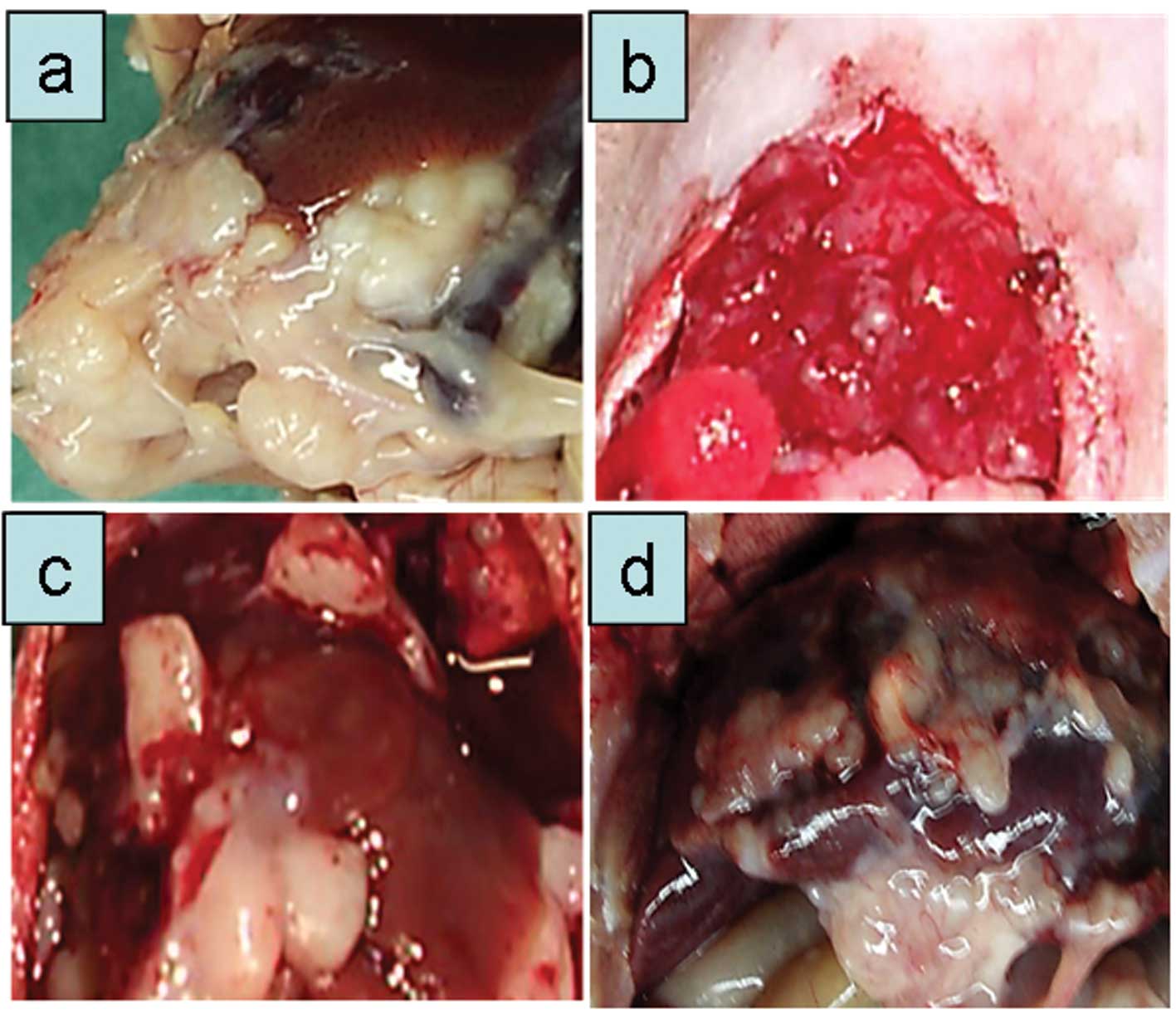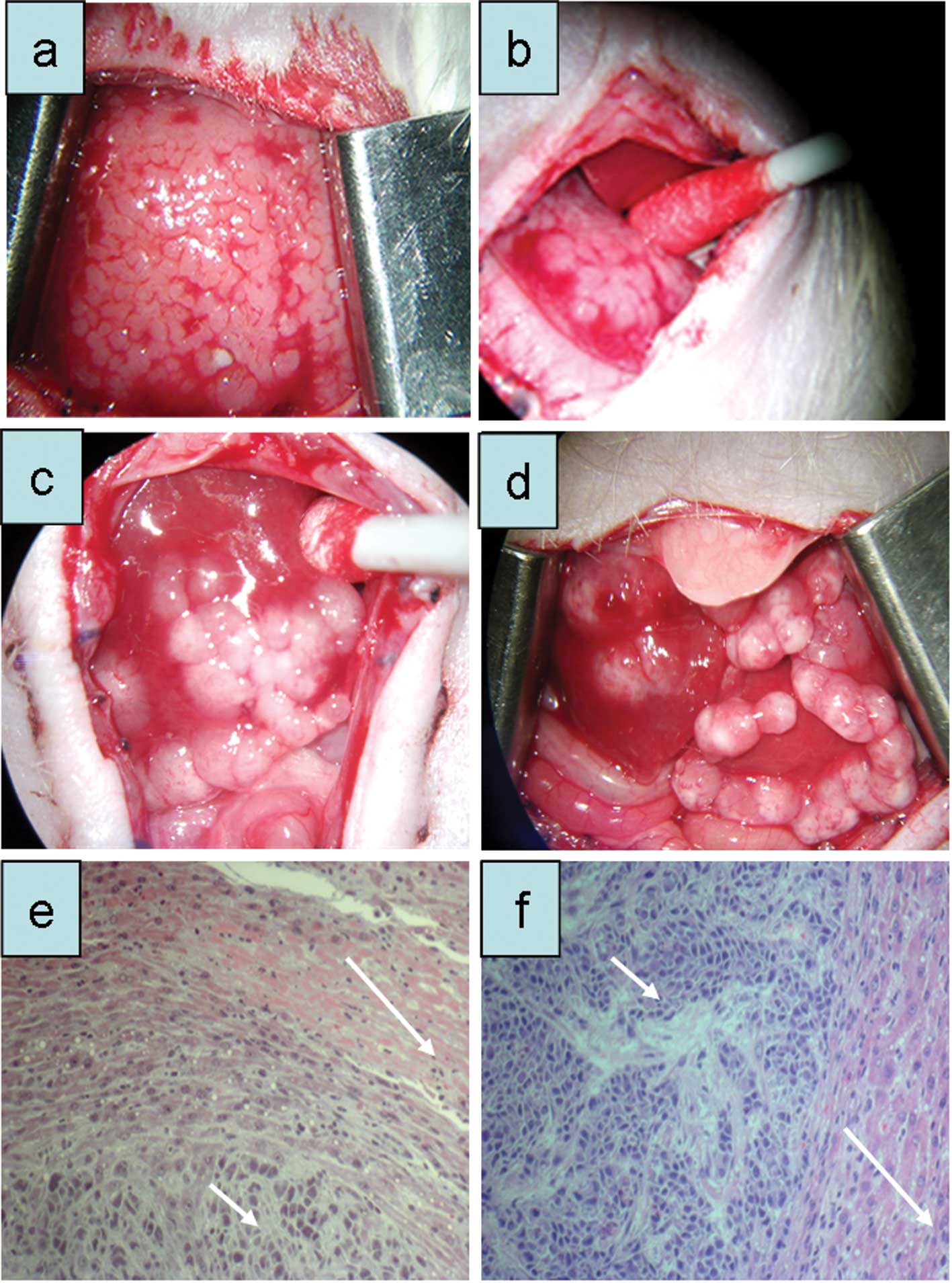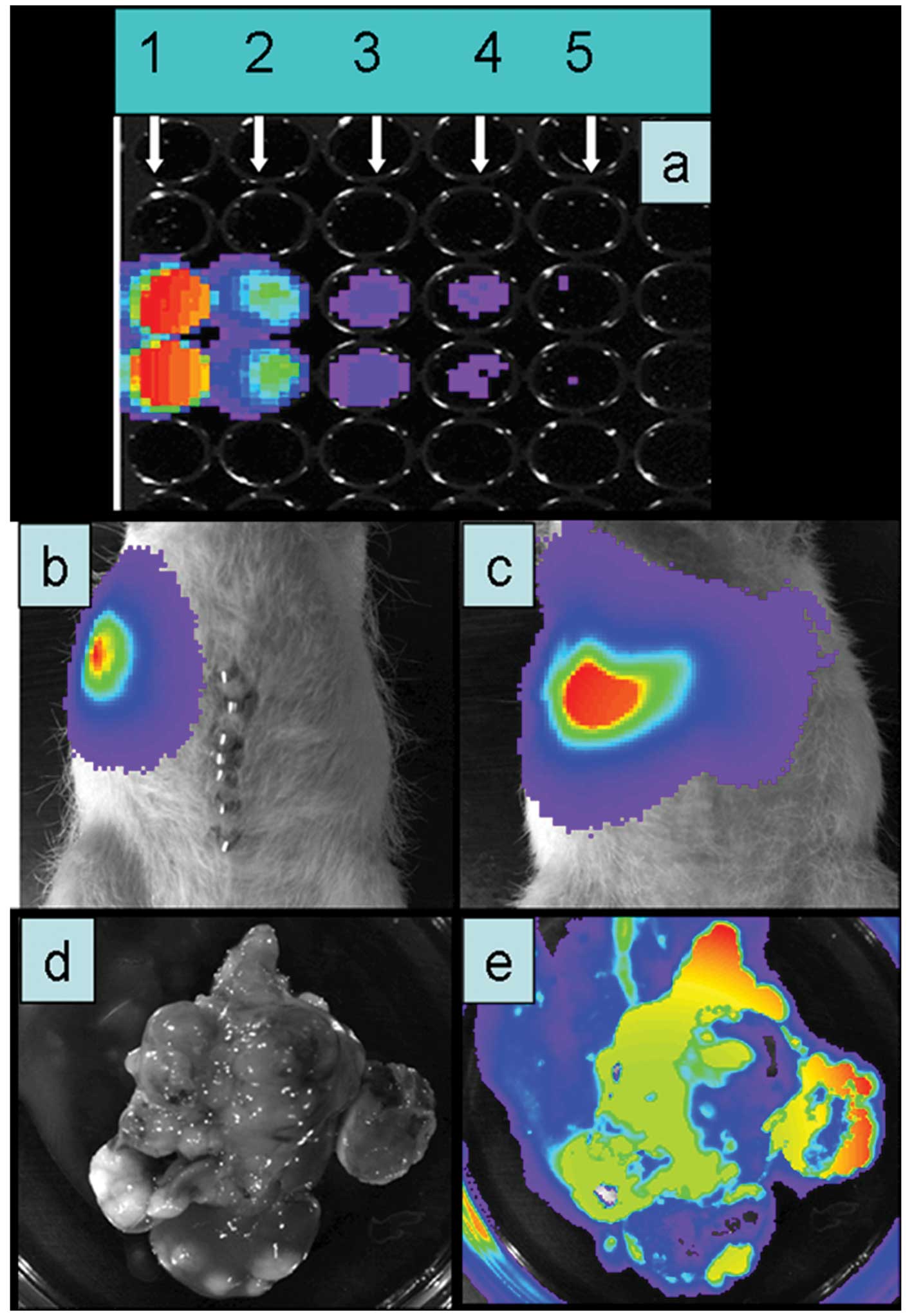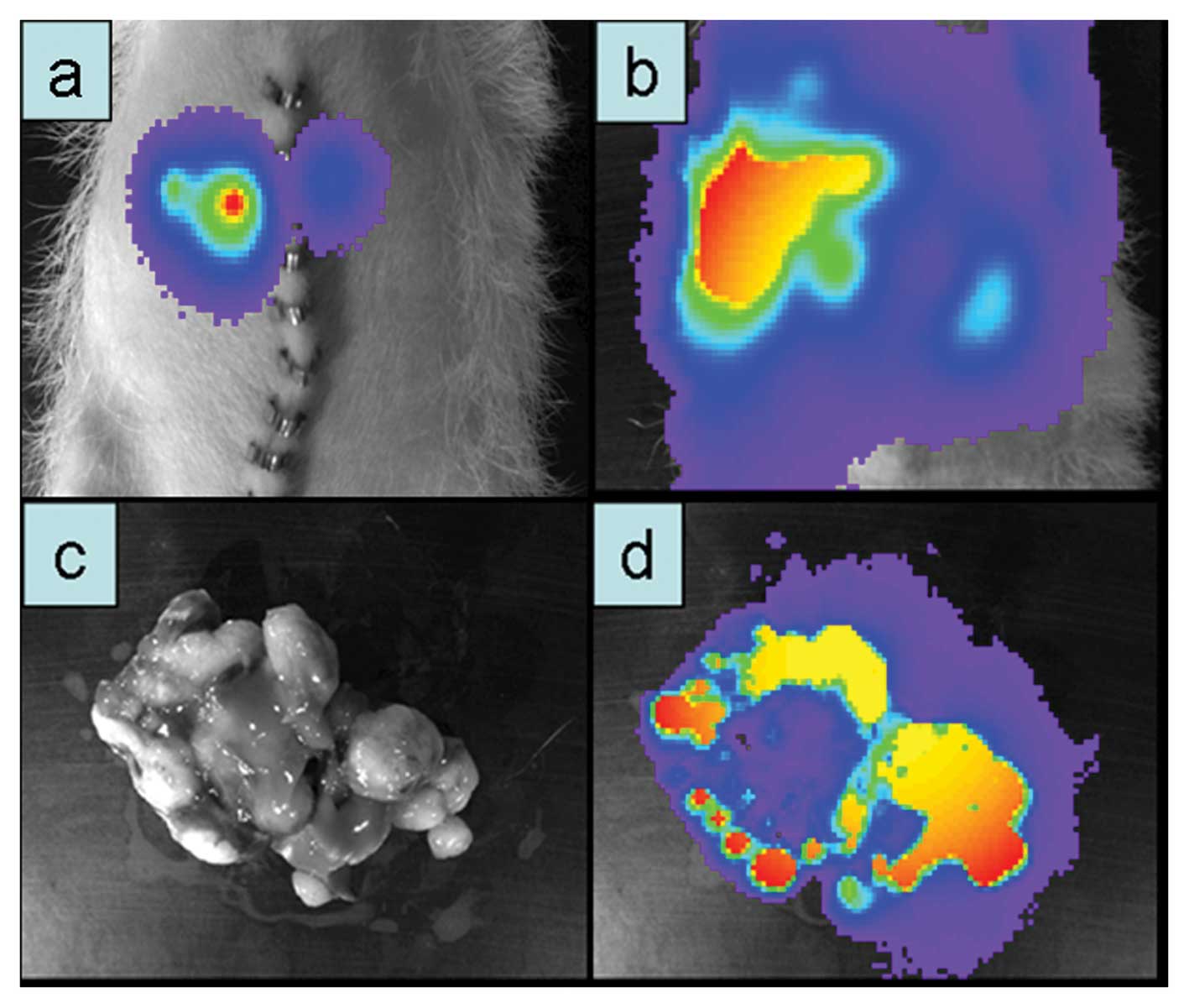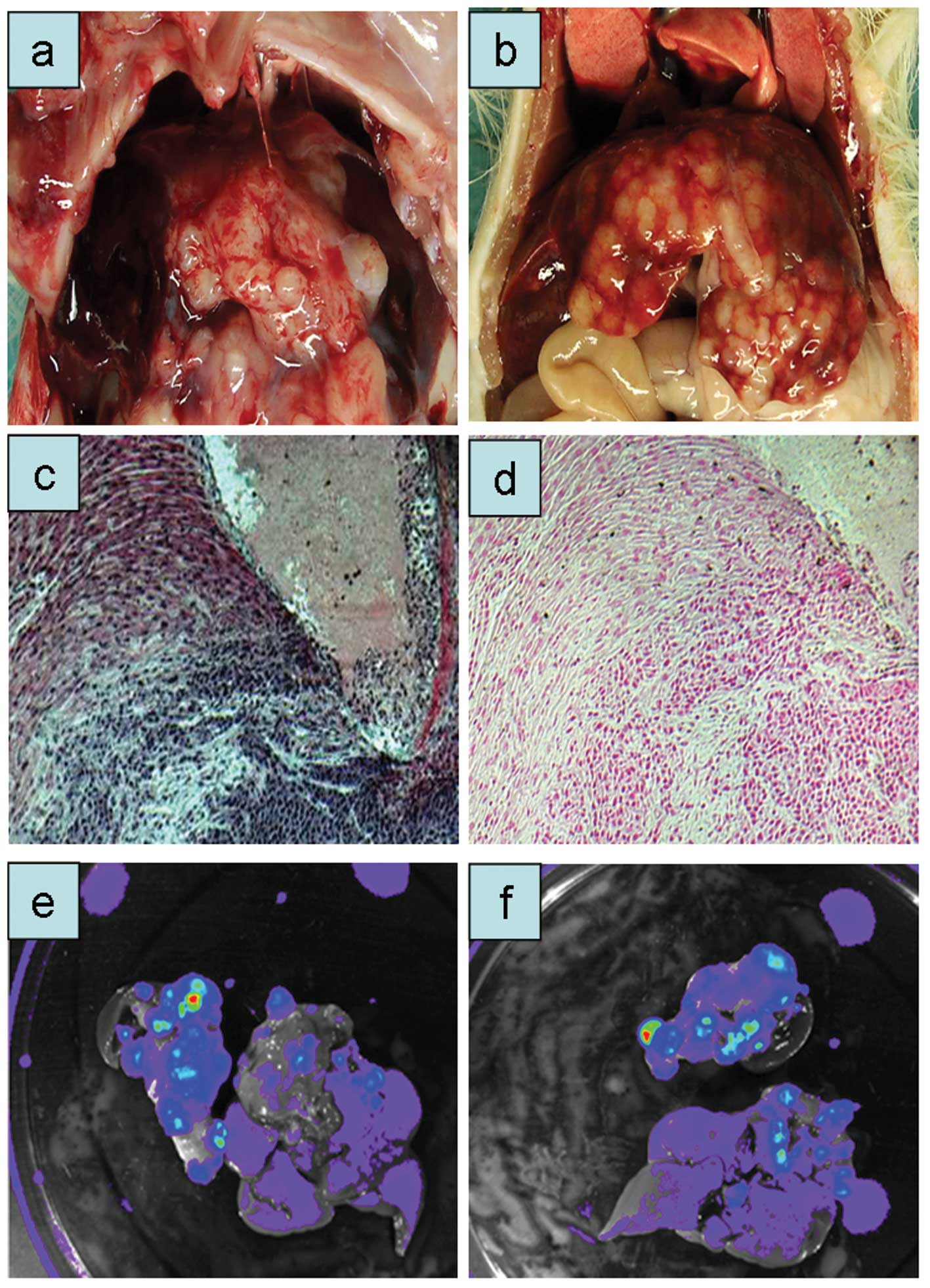|
1
|
Jemal A, Tiwari RC, Murray T, et al:
Cancer statistics, 2004. CA Cancer J Clin. 54:8–29. 2004.
View Article : Google Scholar
|
|
2
|
Ghaneh P, Kawesha A, Howes N, Jones L and
Neoptolemos JP: Adjuvant therapy for pancreatic cancer. World J
Surg. 23:937–945. 1999. View Article : Google Scholar
|
|
3
|
Alanen KA and Joensuu H: Long-term
survival after pancreatic adenocarcinoma - often a misdiagnosis? Br
J Cancer. 68:1004–1005. 1993. View Article : Google Scholar : PubMed/NCBI
|
|
4
|
Li D, Xie K, Wolff R and Abbruzzese JL:
Pancreatic cancer. Lancet. 363:1049–1057. 2004. View Article : Google Scholar
|
|
5
|
Friess H, Ding J, Kleeff J, et al:
Microarray-based identification of differentially expressed growth-
and metastasis-associated genes in pancreatic cancer. Cell Mol Life
Sci. 60:1180–1199. 2003.PubMed/NCBI
|
|
6
|
Kayed H, Kleeff J, Keleg S, et al: Indian
hedgehog signaling pathway: expression and regulation in pancreatic
cancer. Int J Cancer. 110:668–676. 2004. View Article : Google Scholar : PubMed/NCBI
|
|
7
|
Bardeesy N and DePinho RA: Pancreatic
cancer biology and genetics. Nat Rev Cancer. 2:897–909. 2002.
View Article : Google Scholar
|
|
8
|
Hansel DE, Kern SE and Hruban RH:
Molecular pathogenesis of pancreatic cancer. Annu Rev Genomics Hum
Genet. 4:237–256. 2003. View Article : Google Scholar : PubMed/NCBI
|
|
9
|
Matzku S, Komitowski D, Mildenberger M and
Zoller M: Characterization of BSp73, a spontaneous rat tumor and
its in vivo selected variants showing different metastasizing
capacities. Invasion Metastasis. 3:109–123. 1983.PubMed/NCBI
|
|
10
|
Katz MH, Takimoto S, Spivack D, Moossa AR,
Hoffman RM and Bouvet M: A novel red fluorescent protein orthotopic
pancreatic cancer model for the preclinical evaluation of
chemotherapeutics. J Surg Res. 113:151–160. 2003. View Article : Google Scholar : PubMed/NCBI
|
|
11
|
Sun FX, Tohgo A, Bouvet M, Yagi S,
Nassirpour R, Moossa AR and Hoffman RM: Efficacy of camptothecin
analog DX-8951f (Exatecan Mesylate) on human pancreatic cancer in
an orthotopic metastatic model. Cancer Res. 63:80–85.
2003.PubMed/NCBI
|
|
12
|
Marincola FM, Drucker BJ, Siao DY, Hough
KL and Holder WD Jr: The nude mouse as a model for the study of
human pancreatic cancer. J Surg Res. 47:520–529. 1989. View Article : Google Scholar : PubMed/NCBI
|
|
13
|
Jimenez RE, Hartwig W, Antoniu BA, Compton
CC, Warshaw AL and Fernandez-Del CC: Effect of matrix
metalloproteinase inhibition on pancreatic cancer invasion and
metastasis: an additive strategy for cancer control. Ann Surg.
231:644–654. 2000. View Article : Google Scholar : PubMed/NCBI
|
|
14
|
Tzanakakis GN, Margioris AN, Tsatsakis AM
and Vezeridis MP: The metastatic potential of human pancreatic cell
lines in the liver of nude mice correlates well with cathepsin B
activity. Int J Gastrointest Cancer. 34:27–38. 2003. View Article : Google Scholar : PubMed/NCBI
|
|
15
|
Vernejoul F, Faure P, Benali N, et al:
Antitumor effect of in vivo somatostatin receptor subtype 2 gene
transfer in primary and metastatic pancreatic cancer models. Cancer
Res. 62:6124–6131. 2002.PubMed/NCBI
|
|
16
|
Samnick S, Romeike BF, Kubuschok B, et al:
p-[123I]iodo-L-phenylalanine for detection of pancreatic cancer:
basic investigations of the uptake characteristics in primary human
pancreatic tumour cells and evaluation in in vivo models of human
pancreatic adenocarcinoma. Eur J Nucl Med Mol Imaging. 31:532–541.
2004.
|
|
17
|
Raz A, Zoller M and Ben Z: Cell
configuration and adhesive properties of metastasizing and
non-metastasizing BSp73 rat adenocarcinoma cells. Exp Cell Res.
162:127–141. 1986. View Article : Google Scholar : PubMed/NCBI
|
|
18
|
Tuveson DA, Zhu L, Gopinathan A, et al:
Mist1-KrasG12D knock-in mice develop mixed differentiation
metastatic exocrine pancreatic carcinoma and hepatocellular
carcinoma. Cancer Res. 66:242–247. 2006. View Article : Google Scholar
|
|
19
|
Kokkinakis DM, Ahmed MM, Chendil D,
Moschel RC and Pegg AE: Sensitization of pancreatic tumor
xenografts to carmustine and temozolomide by inactivation of their
O6-Methylguanine-DNA methyltransferase with O6-benzylguanine or
O6-benzyl-2′-deoxyguanosine. Clin Cancer Res. 9:3801–3807.
2003.
|
|
20
|
Ito D, Fujimoto K, Mori T, et al: In vivo
antitumor effect of the mTOR inhibitor CCI-779 and gemcitabine in
xenograft models of human pancreatic cancer. Int J Cancer.
118:2337–2343. 2006. View Article : Google Scholar : PubMed/NCBI
|
|
21
|
Sausville EA and Burger AM: Contributions
of human tumor xenografts to anticancer drug development. Cancer
Res. 66:3351–3354. 2006. View Article : Google Scholar : PubMed/NCBI
|
|
22
|
Eberwine J, Yeh H, Miyashiro K, et al:
Analysis of gene expression in single live neurons. Proc Natl Acad
Sci USA. 89:3010–3014. 1992. View Article : Google Scholar : PubMed/NCBI
|
|
23
|
Smyth GK: Linear models and empirical
bayes methods for assessing differential expression in microarray
experiments. Stat Appl Genet Mol Biol. 3:Article 32004.
|
|
24
|
Smyth GK: Limma: linear models for
microarray data. Bioinformatics and Computational Biology Solutions
Using R and Bioconductor. Gentleman R, Carey V, Dudoit S, Irizarry
R and Huber W: Springer; New York: pp. 397–420. 2005, View Article : Google Scholar
|
|
25
|
Goeman JJ, van de Geer SA, de KF and van
Houwelingen HC: A global test for groups of genes: testing
association with a clinical outcome. Bioinformatics. 20:93–99.
2004. View Article : Google Scholar : PubMed/NCBI
|
|
26
|
Goeman JJ, Oosting J, Cleton-Jansen AM,
Anninga JK and van Houwelingen HC: Testing association of a pathway
with survival using gene expression data. Bioinformatics.
21:1950–1957. 2005. View Article : Google Scholar : PubMed/NCBI
|
|
27
|
R Development Core Team. A language and
environment for statistical computing. R Foundation for Statistical
Computing; Vienna: 2011
|
|
28
|
Iwamura T, Katsuki T and Ide K:
Establishment and characterization of a human pancreatic cancer
cell line (SUIT-2) producing carcinoembryonic antigen and
carbohydrate antigen 19-9. Jpn J Cancer Res. 78:54–62.
1987.PubMed/NCBI
|
|
29
|
Taniguchi S, Iwamura T and Katsuki T:
Correlation between spontaneous metastatic potential and type I
collagenolytic activity in a human pancreatic cancer cell line
(SUIT-2) and sublines. Clin Exp Metastasis. 10:259–266. 1992.
View Article : Google Scholar : PubMed/NCBI
|
|
30
|
Friess H, Buchler M, Kruger M and Beger
HG: Treatment of duct carcinoma of the pancreas with the LH-RH
analogue buserelin. Pancreas. 7:516–521. 1992. View Article : Google Scholar : PubMed/NCBI
|
|
31
|
Fedarko NS, Jain A, Karadag A, Van Eman MR
and Fisher LW: Elevated serum bone sialoprotein and osteopontin in
colon, breast, prostate, and lung cancer. Clin Cancer Res.
7:4060–4066. 2001.PubMed/NCBI
|
|
32
|
Kolb A, Kleeff J, Guweidhi A, et al:
Osteopontin influences the invasiveness of pancreatic cancer cells
and is increased in neoplastic and inflammatory conditions. Cancer
Biol Ther. 4:740–746. 2005. View Article : Google Scholar : PubMed/NCBI
|
|
33
|
Wong JC, Chan SK, Schaeffer DF, et al:
Absence of MMP2 expression correlates with poor clinical outcomes
in rectal cancer, and is distinct from MMP1-related outcomes in
colon cancer. Clin Cancer Res. 17:4167–4176. 2011. View Article : Google Scholar : PubMed/NCBI
|
|
34
|
Hart K, Landvik NE, Lind H, Skaug V,
Haugen A and Zienolddiny S: A combination of functional
polymorphisms in the CASP8, MMP1, IL10 and SEPS1 genes affects risk
of non-small cell lung cancer. Lung Cancer. 71:123–129. 2011.
View Article : Google Scholar : PubMed/NCBI
|
|
35
|
Hoyo C, Murphy SK, Schildkraut JM, et al:
IGF2R genetic variants, circulating IGF2 concentrations and colon
cancer risk in African Americans and Whites. Dis Markers.
32:133–141. 2012. View Article : Google Scholar : PubMed/NCBI
|
|
36
|
Yee LD, Sabourin CL, Liu L, Li HM, Smith
PJ, Seewaldt V and Kniss DA: Peroxisome proliferator-activated
receptor gamma activation in human breast cancer. Int J Oncol.
15:967–973. 1999.PubMed/NCBI
|
|
37
|
Guan YF, Zhang YH, Breyer RM, Davis L and
Breyer MD: Expression of peroxisome proliferator-activated receptor
gamma (PPARgamma) in human transitional bladder cancer and its role
in inducing cell death. Neoplasia. 1:330–339. 1999. View Article : Google Scholar
|
|
38
|
Gupta RA, Brockman JA, Sarraf P, Willson
TM and DuBois RN: Target genes of peroxisome proliferator-activated
receptor gamma in colorectal cancer cells. J Biol Chem.
276:29681–29687. 2001. View Article : Google Scholar : PubMed/NCBI
|
|
39
|
Huxley R, Ansary-Moghaddam A, Berrington
de GA, Barzi F and Woodward M: Type-II diabetes and pancreatic
cancer: a meta-analysis of 36 studies. Br J Cancer. 92:2076–2083.
2005. View Article : Google Scholar : PubMed/NCBI
|
|
40
|
Uhlmann ME, Georges RB, Boleij A, Eyol E,
Kubarenko A, Adwan H and Berger MR: Influence of osteopontin
expression on the metastatic growth of CC531 rat colorectal
carcinoma cells in rat liver. Cancer Gene Ther. 18:795–805. 2011.
View Article : Google Scholar : PubMed/NCBI
|
|
41
|
Georges RB, Adwan H, Hamdi H, Hielscher T,
Linnemann U and Berger MR: The insulin-like growth factor binding
proteins 3 and 7 are associated with colorectal cancer and liver
metastasis. Cancer Biol Ther. 12:69–79. 2011. View Article : Google Scholar : PubMed/NCBI
|
|
42
|
Georges R, Bergmann F, Hamdi H, et al:
Sequential biphasic changes in claudin1 and claudin4 expression are
correlated to colorectal cancer progression and liver metastasis. J
Cell Mol Med. 16:260–272. 2012. View Article : Google Scholar : PubMed/NCBI
|
|
43
|
Wittmer A, Khazaie K and Berger MR:
Quantitative detection of lac-Z-transfected CC531 colon carcinoma
cells in an orthotopic rat liver metastasis model. Clin Exp
Metastasis. 17:369–376. 1999. View Article : Google Scholar : PubMed/NCBI
|
|
44
|
Ewing J: The Problems of melanoma. Br Med
J. 2:852–856. 1930. View Article : Google Scholar
|
|
45
|
Ewing J: Neoplastic diseases.
Saunders-Verlag; Philadelphia: pp. 125–129. 1928
|
|
46
|
Paget S: The distribution of secondary
growths in cancer of the breast. 1889. Cancer Metastasis Rev.
8:98–101. 1989.PubMed/NCBI
|
|
47
|
Chishima T, Miyagi Y, Wang X, Yamaoka H,
Shimada H, Moossa AR and Hoffman RM: Cancer invasion and
micrometastasis visualized in live tissue by green fluorescent
protein expression. Cancer Res. 57:2042–2047. 1997.PubMed/NCBI
|















